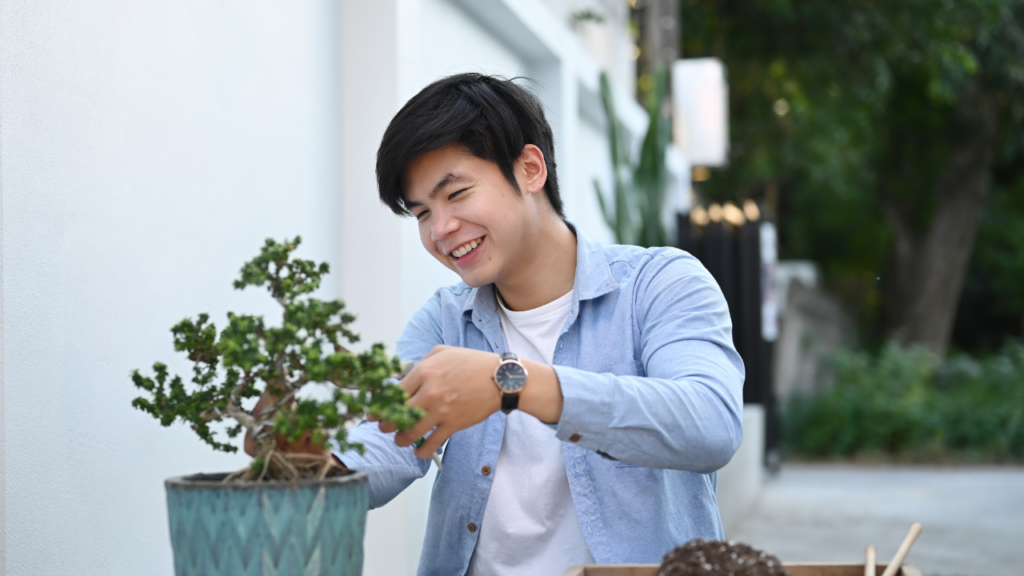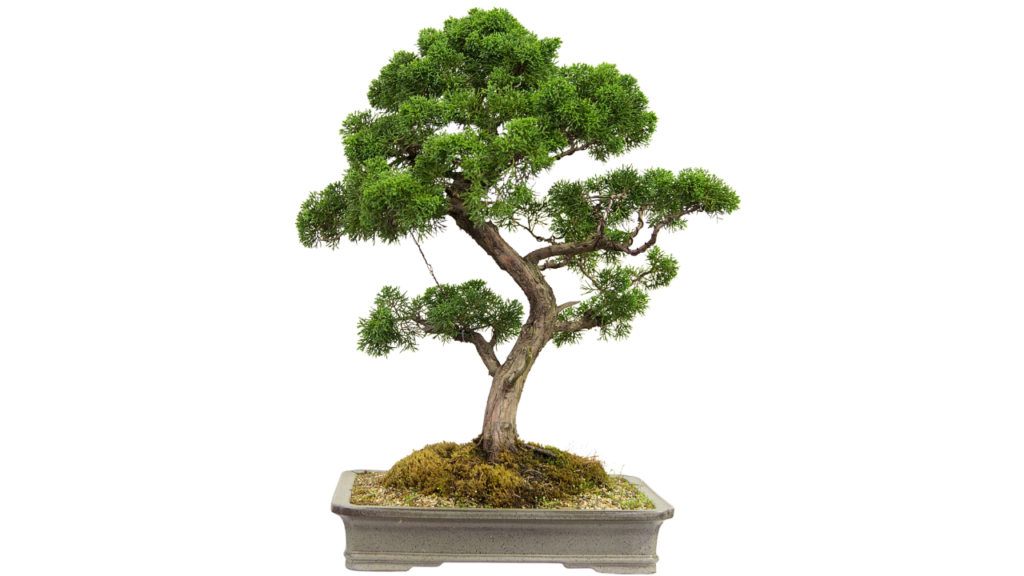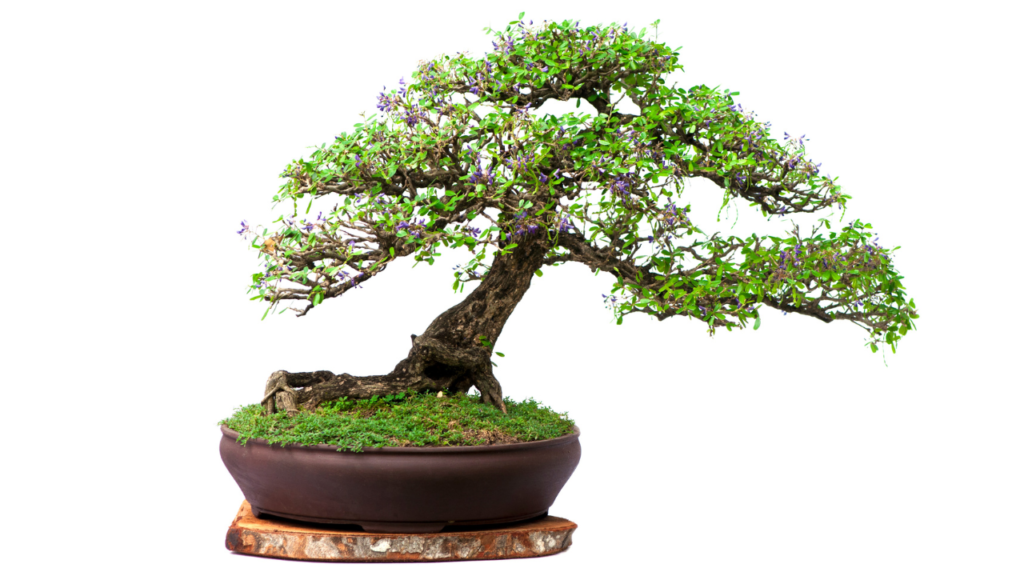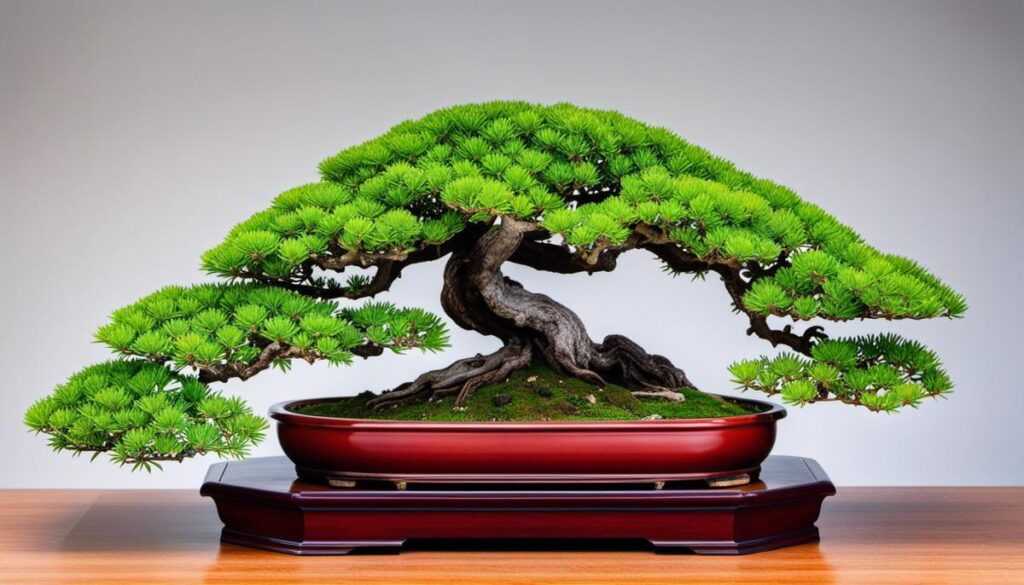The artful cultivation of indoor bonsai trees is a rewarding and creative hobby that fosters an appreciation for nature in miniature form. The practice, steeped in history and horticultural skill, invites enthusiasts to explore a range of tree species perfect for indoor environments, such as Ficus, Jade, Serissa, and Hawaiian Umbrella trees. Each tree exhibits unique characteristics, making this an ever-evolving and fascinating endeavor. This journey delves into not only the species themselves but also the necessary care, maintenance, and aesthetic considerations that make bonsai cultivation a multifaceted art. In essence, it’s an exploration that transforms indoor spaces into verdant havens, bringing in the outside world and radiating calm and vibrancy.
Types of Indoor Bonsai Trees

Ficus Bonsai Trees
The Ficus bonsai, otherwise known as the Fig or Fig Tree, originates from the tropical regions of Asia. Ficus trees are a broad category of bonsai trees with over 800 species. They are notably one of the best species of bonsai for indoor cultivation. Ficus bonsai trees are known for their sensitivity to change and their ability to adapt to a wide range of environments.
These tropical trees prefer high humidity levels and regular watering. They boast twisted roots and irregular bark patterns, which offer a unique aesthetic to indoor settings. Ficus bonsai are furthermore recognized for their robust nature as they can withstand poor lighting conditions and being over or under-watered occasionally.
Jade Bonsai Trees
Jade Bonsai are native to the arid regions of Africa and are technically considered a succulent, though they present themselves similarly to traditional bonsai trees. They are most recognized for their thick, round, dark green leaves and thick trunk.
The Jade bonsai tree is known for its strength and toughness, making it easy to care for indoors. They require a relatively small amount of light and can survive in fairly dry conditions. Nonetheless, they need a well-draining soil mix to avoid root rot. An interesting characteristic of Jade trees is their ability to store water in their leaves, making them particularly forgiving if a watering is missed.
Serissa Bonsai Trees
The Serissa Foetida, or “Tree of a thousand stars,” is a popular choice for indoor bonsai because of its beautiful white blossoms. It is native to Southeast Asia and thrives in bright, but indirect light.
Serissa bonsai trees are known for their small leaves, dense growth pattern, and the beautiful white flowers they produce throughout most of the year. However, it requires a bit more care than some other species. It prefers well-draining soil, humid conditions, and needs to be protected from drastic temperature changes. Because Serissa bonsai trees are so sensitive to environmental change, they may drop their leaves if they are unhappy with their location or watering regime.
Hawaiian Umbrella Trees as Indoor Bonsai
The Hawaiian Umbrella tree, scientifically known as Schefflera Arboricola, originates from Taiwan and is an excellent choice for indoor bonsai cultivation thanks to its stunning yet sophisticated aesthetic. The tree’s name is derived from the umbrella-shaped clusters of its small leaves.
Hawaiian Umbrella trees are adaptable to diverse light settings but have a preference for indirect sunlight. Standard indoor temperatures suit them well, but higher humidity levels are beneficial. One of the primary benefits of this tree is its robustness and high tolerance to irregular watering patterns. While they tolerate overwatering or underwatering, they ideally enjoy staying moist through infrequent, thorough watering. With their glossy leaves and a natural leaf drop in winter, Hawaiian Umbrella trees can add an intriguing element to any indoor environment.
Basic Indoor Bonsai Cultivation

Various Types of Indoor Bonsai Trees
Bonsai trees, the miniature imitations of their full-sized counterparts, are produced through meticulous care and cultivation. In an indoor setting, certain bonsai species excel, providing a variety of options for indoor decor. These include the Ficus Bonsai or Weeping Fig, Jade Bonsai, scientifically known as ‘crassula ovata’, the aforementioned Hawaiian Umbrella Tree, also called ‘arboricola schefflera’, and the resilient Chinese Elm Bonsai, all of which are notable for their resilience and adaptability in indoor conditions.
Indoor Bonsai Climate Needs
Indoor bonsai trees generally prefer a stable climate, with low variations in temperature and humidity. Most indoor bonsai types do favor a warmer climate, typically between 60-75°F, as they don’t enter a dormant winter phase like their outdoor counterparts. Humidity levels should be moderate; certain species may need a humidity tray to prevent drying out.
Lighting and Positioning
As for lighting, bonsai trees require adequate access to sunlight for photosynthesis, as they rely on light to produce food. An east or west-facing window can provide enough natural light and warmth, ensuring the tree receives at least six hours of sunlight. Regarding positioning, indoor bonsai shouldn’t be placed near radiators or vents as sudden temperature changes can stun the growth of the tree or even be fatal.
Watering Needs
Bonsai trees need to be watered regularly to stay healthy. Thorough watering ensures the entire root mass gets wet. The amount of water a tree needs depends on numerous factors such as the size of the tree, the size of the pot, and the climate. A good rule of thumb to follow would be to water when the soil becomes slightly dry. Underwatering and overwatering can lead to drastic health issues for the tree.
Soil Type
The soil for bonsai trees is specially formulated to provide a good balance of air and water to the roots. Bonsai soil generally consists of lava rock, pumice, and other ingredients like Akadama and Kanuma, both used in bonsai soil in Japan. The goal is to provide a soil environment that retains water and nutrients but also drains well to prevent root rot.
Container Selection
Bonsai pots should be chosen with care, matching the style of the tree, but also fulfilling practical needs. Pots can be ceramic or plastic, shallow, and possibly with wire loops for anchoring the tree. Size matters, too – overly large pots can hold too much water and cause root rot, while small pots may not hold enough water and nutrients to sustain the tree. Drainage holes are a must to prevent water logging, and additional wiring holes may be needed for tree stability.
Pruning and Training
A key part of bonsai cultivation is the act of shaping the trees. Pruning helps to create the bonsai appearance, controlling growth and promoting the tree’s health. Regularly removing fast-growing shoots will allow slower ones to thrive, promoting balanced growth and preventing overcrowding. Training the tree with wire can help orient branches into more aesthetically pleasing shapes.
Bonsai Health and Troubleshooting
With proper care, indoor bonsai trees can thrive for years. One should be aware of symptoms of common maladies, such as yellowing or falling leaves, which can suggest water stress, poor lighting, or disease. Pest inspection is necessary too as insects can damage bonsai trees severely.
Exploring the Intricate Craft of Bonsai Trees
Delving into the world of bonsai trees, one quickly realizes it’s a nuanced craft that demands patience, careful tending, and unwavering dedication. Precise attention to the particular necessities of each tree species results in an immensely satisfying botanical experience, especially when the bonsai thrives in an indoor environment.
Indoor Bonsai Tree Care and Maintenance

A Look at Various Types of Indoor Bonsai Trees
A diverse array of tree types are appropriate for growing as indoor bonsai. Especially popular varieties include the ficus, jade plant, Brazilian rain tree, bougainvillea, and the Indian laurel fig. Adapting to the unique growth patterns and individual requirements of these species shapes the way each is tended and maintained.
Pruning Indoor Bonsai Trees
Pruning is a common maintenance requirement for all types of indoor bonsai trees. It usually involves both maintenance pruning and structural pruning. Maintenance pruning involves regularly trimming back the plant to induce fuller, more compact growth. Structural pruning, on the other hand, involves more substantial cutting back to create or maintain the bonsai tree’s overall shape and design. The appropriate process and frequency depend on the type of tree and its growth pattern.
Feeding Indoor Bonsai Trees
Feeding or fertilizing indoor bonsai trees involves providing the trees with the necessary nutrients they might not get sufficiently from the soil and water. These nutrients are crucial for the growth and health of the tree, its ability to resist pests and diseases, and its aptitude for producing foliage and, in some species, flowers or fruit. The type and amount of fertilizer to use depend on the species, its stage of development, and the season. For example, nitrogen-rich fertilizers are beneficial for promoting growth in the rainy season, while a balanced fertilizer is best during colder seasons.
Repotting Indoor Bonsai Trees
Repotting is another crucial aspect of indoor bonsai tree care. It usually involves checking the root system of the tree for potential overcrowding, pruning the roots if necessary, and returning the tree to the same pot with fresh soil or transferring it to a new one. This process is typically done every two to five years depending on the species and the age of the tree. Some fast-growing species may require more frequent repotting.
Pest and Disease Management for Indoor Bonsai Trees
Like all plants, indoor bonsai trees may be susceptible to pests and diseases. Among the most common pests are aphids, spider mites, and scale insects, while common diseases include fungus and root rot. Regular examination of both the foliage and the roots (during repotting) can help to catch these challenges early. If detected, several remedies ranging from specific sprays to changes in care routines can be used to deal with the problem. Preventive measures, such as ensuring good ventilation, proper watering, and appropriate soil, can go a long way to protect the trees from these challenges.
Understanding the Needs of Various Indoor Bonsai Trees
The care that indoor bonsai trees need varies according to their species. For instance, the ficus bonsai tree thrives in an abundance of indirect sunlight, whereas the jade plant can survive even without frequent watering. The Brazilian rain tree has a high preference for abundant light and moisture, whereas the bougainvillea needs direct sunlight for at least four hours per day. The Indian laurel fig, on the other hand, needs high levels of humidity combined with bright, indirect sunlight. Achieving full understanding of such requirements is fundamental in ensuring the healthy growth and maintenance of the aesthetic appeal of your indoor bonsai tree.
Creating Art with Bonsai Trees

A Variety of Indoor Bonsai Trees to Choose From
A quintessential indoor bonsai tree is one that flourishes well under controlled temperature and light conditions within a home or office setup. There are many different varieties of indoor bonsai trees, each possessing its unique charm and aesthetic attraction. Some of the popular varieties of indoor bonsai trees encompass the Ficus Bonsai, the Jade Plant, the Bahama Berry, the Hawaiian Umbrella Tree, the Sago Palm, and the Carmona, also known as Fukien Tea Bonsai.
Ficus Bonsai
Of all the indoor varieties, Ficus bonsai are one of the easiest to care for, making them a very popular choice among bonsai enthusiasts. Ficus bonsai come in different types such as the Ficus Retusa, the Ficus Ginseng, and the Ficus Benjamin, to mention a few. Their dense canopy and twisted roots add an interesting aspect to the overall aesthetic of these bonsai trees. Ficus trees also can withstand low-light conditions, hence they are perfect for indoor cultivation.
Jade Plant
The Jade Plant, also called the Crassula ovata, is a succulent bonsai type that has fleshy, oval-shaped leaves and thick, woody stems. Their ability to store water in their leaves allows them to withstand dry conditions, making them an ideal indoor bonsai for lower humidity environments.
Bahama Berry
The Bahama Berry Bonsai, or the Nashia inaguensis, is renowned for its delightful fragrance and small, delicate foliage. It is perfect as an indoor bonsai because it adapts well to warmer climates as well as lower light conditions.
Hawaiian Umbrella Tree
Scientifically known as Schefflera arboricola, the Hawaiian Umbrella Tree Bonsai is appreciated for its glossy, umbrella-like leaves that form a dense canopy. It’s highly adaptable to indoor settings and requires less sunlight compared to other bonsai trees.
Sago Palm
The Sago Palm, or Cycas revoluta, is not technically a palm but a type of gymnosperm. This slow-growing, long-lived plant serves as an interesting indoor bonsai thanks to its unique palm-like appearance and roughly-scaled trunk.
Carmona (Fukien Tea) Bonsai
The Carmona, more commonly known as the Fukien Tea Bonsai, stands out with its small white flowers and dark green, glossy leaves. It’s an indoor bonsai with a higher need for light and humidity, making it a bit more challenging to maintain.
Creating Art with Bonsai Trees
Bonsai cultivation is an art that requires patience and creativity. Bonsai can be styled in several forms such as upright, slanting, informal upright, cascade, semi-cascade, literati, group planting, windswept, and multi-trunk styles. The design should be in harmony with the natural form of the tree while conveying a balance of symmetry and aesthetic appeal. Each species has its unique set of requirements and would therefore require distinct styling techniques.

Appreciating Bonsai as a Form of Living Art
Bonsai trees are more than just plants; they are a creative expression of living art. Each tree tells a story through its shape, design, and the way it has been pruned and styled. The beauty of this living art form is in its change and growth over time, taking years and sometimes even generations to reach its final form. This aspect of bonsai culture instills a sense of patience and appreciation for slow and natural processes. Observing and caring for bonsai trees also offer a peaceful and mindful activity that can connect individuals with the natural world indoors.

What starts as a simple seedling in a pot can morph into a living work of art with time, care, and aesthetic vision. Throughout this journey, the importance of specifics like species selection, cultivation techniques, and artistic principles has been emphasized. However, the true magic of indoor bonsai trees lies not only in these practical dimensions but also in the satisfaction and serene beauty they offer. Whether it’s the delicate shaping of a Ficus or the intricate care for a Jade tree, each act deepens the connection with nature and brings a unique sense of accomplishment. The world of indoor bonsai trees is one of endless learning and continuous growth, truly a testament to the enduring allure of nature in miniature form.
